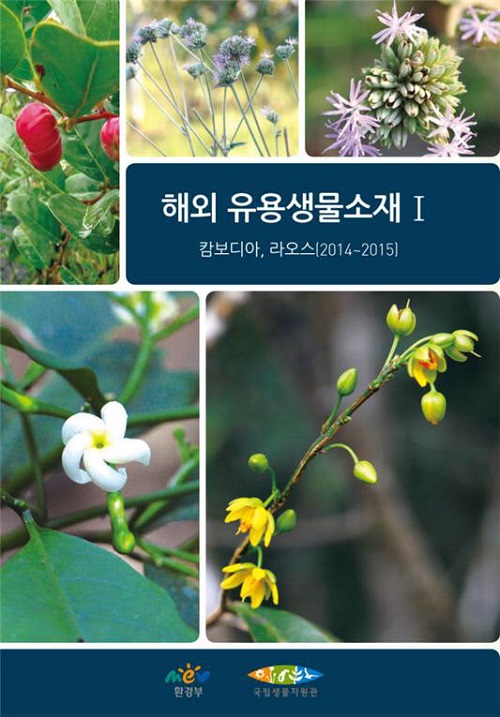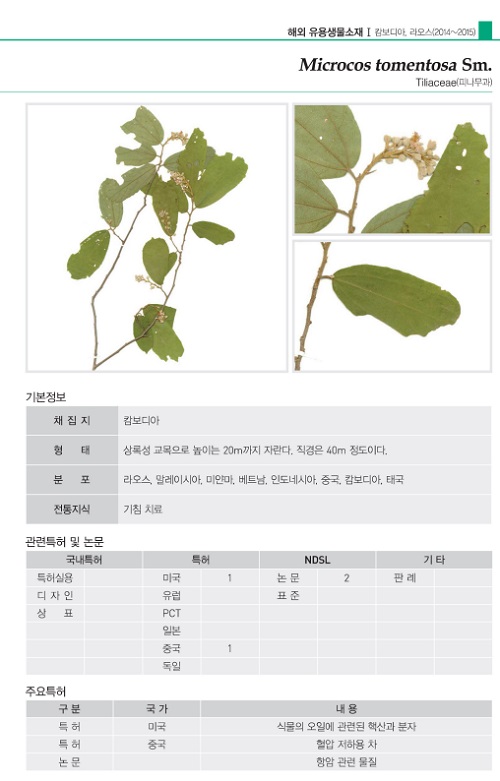
A catalog of medicinal plants from Cambodia and Laos helps practitioners of traditional medicine in both those countries and elsewhere.
A catalog of 196 species of plants and herbs that have long been used for medicinal purposes in Cambodia and Laos is now available.
The National Institute of Biological Resources, part of the Ministry of Environment, recently published “Overseas Useful Plant Species Ⅰ,” a collection that outlines the medicinal effectiveness of 196 plants, flowers and herbs that the institute collected in the two Southeast Asian countries between 2014 and 2015.
The volume includes information on the type, worldwide dispersion and local uses of each plant, as well as pictures of specimens and information about theses or other pieces of research conducted into the plant's effectiveness.

Coscinium fenestratum is a flowering woody climber that has been traditionally used in Laos to treat malaria, postpartum symptoms, wounds, fever and dysentery.

Microcos tomentosa is an evergreen shrub that serves as an ingredient for cough medicine in Cambodia.
The most noteworthy feature of this catalog is that it identifies plants that have a potential commercial use. The selection here was based on traditional knowledge among locals gained through both their traditions and local anecdotes.
For example, it says that Laotians used Coscinium fenestratum, a member of the family Menispermaceae, as a treatment for malaria. Also, people in Cambodia relied on Microcos tomentosa as a way to cure people, especially children, who caught a cold.
A select list of the medicinally useful plants featured in the catalog will undergo further tests for antioxidants and antiallergenic effects, as well as their toxicity. Once verified, the plants will then be stored in an ultralow temperature freezer at the National Institute of Biological Resources in Korea.
“This proven record of the effectiveness of these plants, as evidenced by the fact that people have long eaten, drunk or spread over parts of their body parts of these plants, gives us a pretty good idea about how to take advantage of these resources and where we can begin research into making something out of them,” said an official from the institute. “Securing these useful plants will lead to the development of food and medicine, cosmetics and aromatic perfumery and other products that are good for the health.”
Next time, the institute plans to publish a second volume of useful plant that will focus on Vietnam and Mongolia. It will be out early next year.
By Sohn JiAe
Korea.net Staff Writer
Photos: National Institute of Biological Resources
jiae5853@korea.kr
